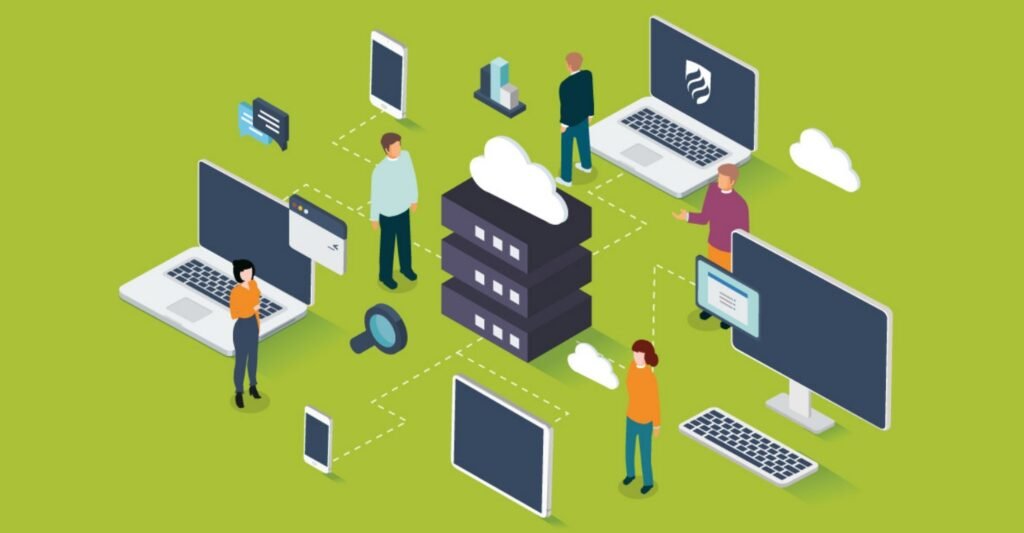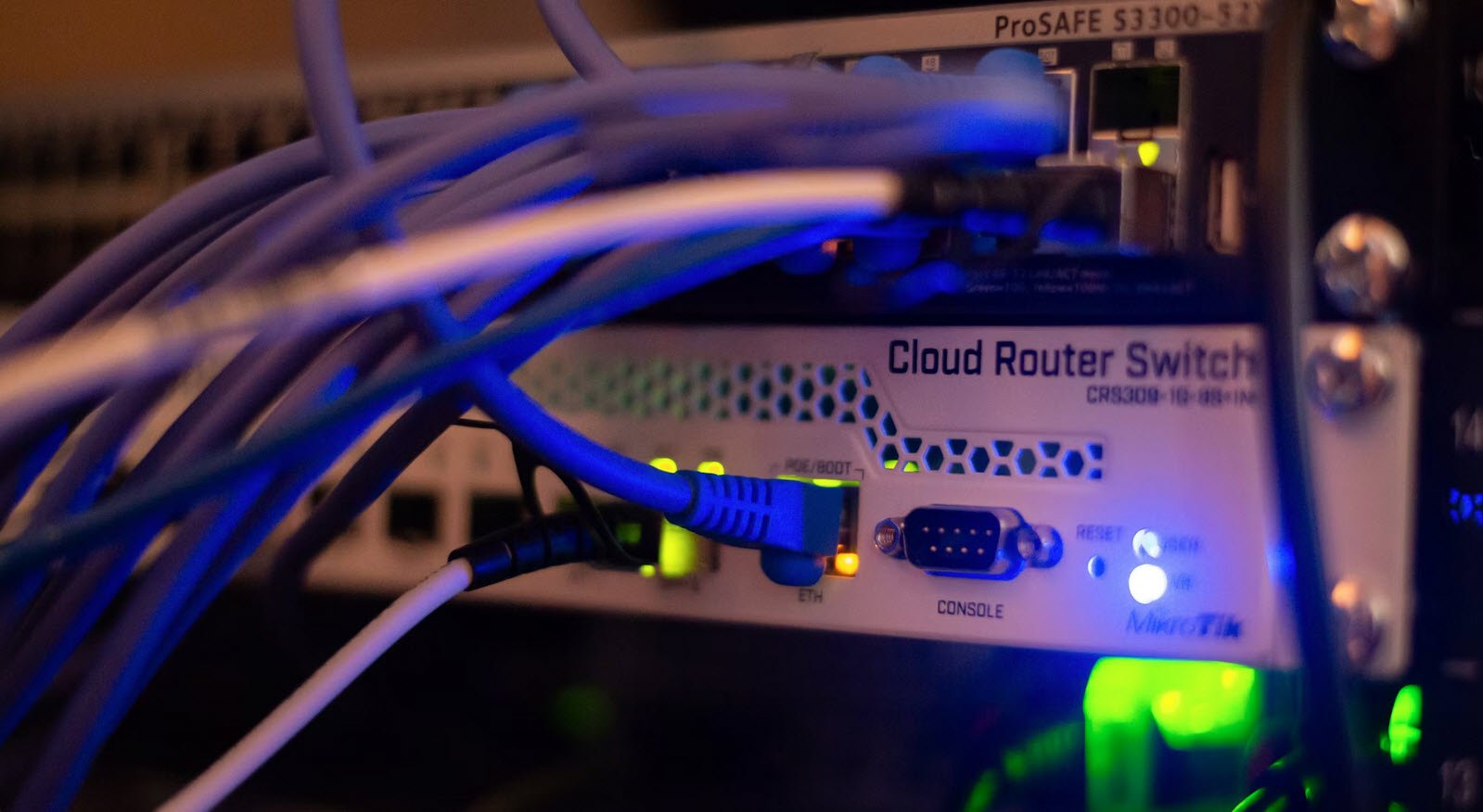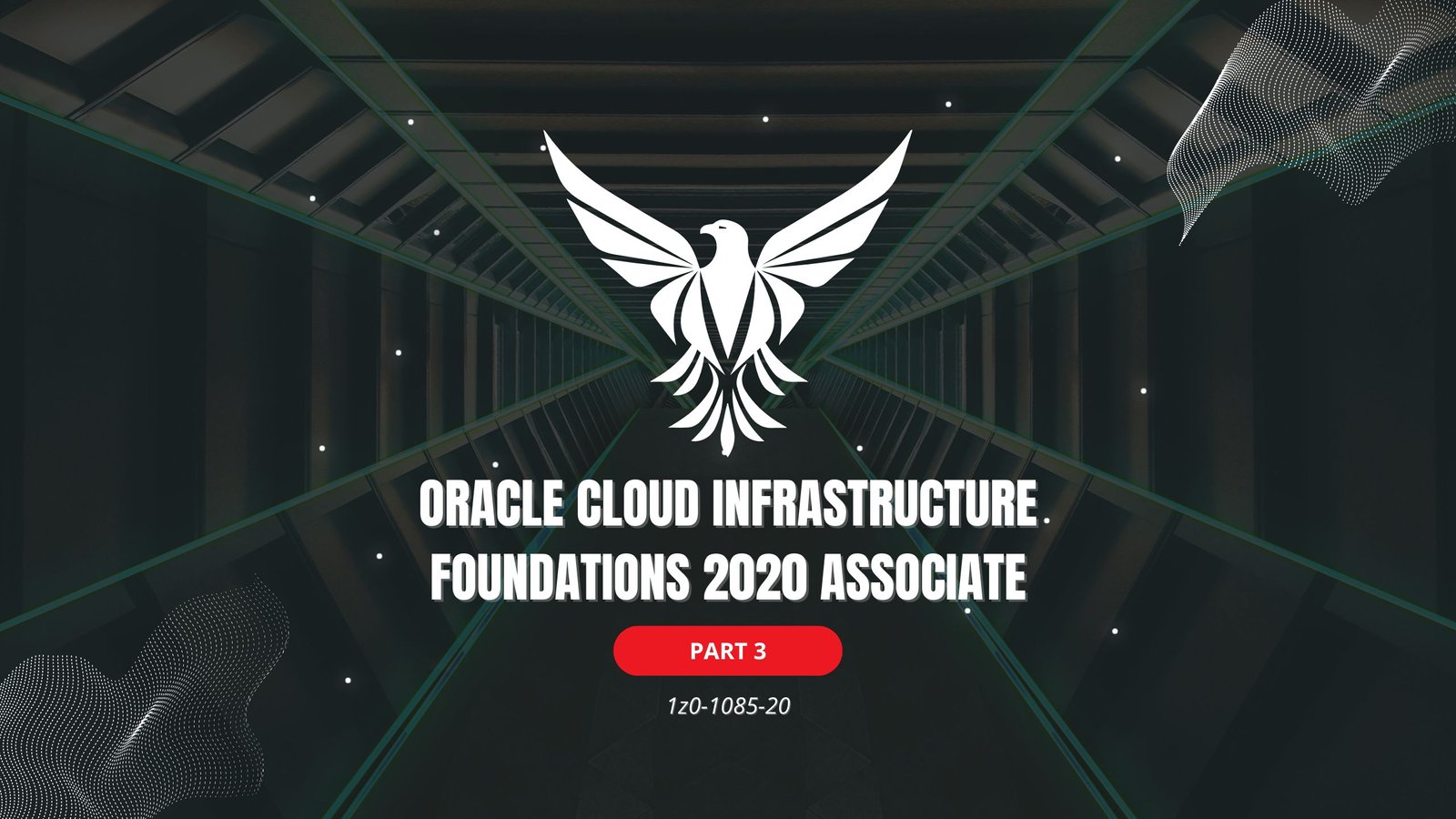
Computer Technology means any and all electronic media and services, including computers, software, e-mail, telephones, voicemail, facsimile machines, online services, internet, provided to employees by the City.
Below is the list of few common terms related to Computer Technology:
Access time
The amount of time it takes for requested information to be delivered from disks and memory.
Antivirus software
A program designed to look for and destroy viruses that may infect the memory of a computer or files stored on a computer.
Artificial intelligence
Computer systems hat attempt to imitate human processes for analyzing and solving problems.
Accumulator
A local storage area called a Register, in which the result of an arithmetic or logic operation is formed.
ADSL (A symmetric Digital Subscriber Line)
A DSL line where the upload speed is different from the download speed. Usually the download speed is much greater.
Application Server
Server software that manages one or more other pieces of software in a way that makes the managed software available over a network, usually to a Web server.
ARPANet (Advanced Research Projects Agency Network)
The precursor to the Internet. Developed in the late 60’s and 70’s by the US Department of Defense as an experiment in wide-area-networking to connect together. Computers that were each running different system so that people at one location could use computing resources from another location.
ATAPI (AT Attachment Packet Interface)
Bandwidth refers to carrying capacity. The greater the bandwidth then, also results in greater speed.
Baud
In common usage the baud of a modem is how many bits it can send, or receive per second. Technically, baud is the number of times per second that the carrier signal shifts value for example a 1200 bit per second modem actually runs at 300 baud, but it moves 4 bits per baud (4 x 300= 1200 bits per second).
Binary
Information consisting entirely of ones and zeros. Also, commonly used to refer to files that are not simply text files, e.g. images.
BIOS (Basic Input/Output System)
A program resides in the ROM chip, and provides the basic instructions for controlling your computer’s hardware. Both the operating system and application software use BIOS routines to ensure compatibility.
Bit (Binary Digit)
A single digit number in base-2 in other words, either a I or a zero. The smallest unit of computerized data. Bandwidths usually measured in bits-per-second.
Blog (BLOG)
A blog is basically a journal that is available on the web. The activity of updating a blog is ‘blogging’ and someone who keeps a blog is a ‘blogger’.
Bps (Bits-Per-Second)
A measurement of how fast data is moved from one place to another. A 56K modem can move 57,000 bits per second.
Broadband
Generally refers to connections to the Internet with much greater bandwidth than you can get with a modem. There is no specific definition of the speed of a “broadband” connection but in general any Internet connection using DSL or a via Cable-TV may be considered a broadband connection.
Browser
A Client program(software) that is used to look at various kinds of Internet resources.
Byte
A set of Bits that represent a single character. Usually there are 8 Bits in a Byte, sometimes more, depending on how the measurement is being made.
Buffer
Buffer is a portion of RAM that is used to temporarily store data, usually from an application, though it is also used when printing, and in most keyboard drivers. Information stored in a buffer is temporarily stored, not permanently saved. Is data pathway.
BIT
It is basic unit of computers. It has two values 1 & 0 only.
BYTE
Combination of 8 Bits.
Basic Input/Output System (BIOS)
Also known as ROM BIOS. It provides a abstraction layer for the hardware, i.e.,a consistent way for application programs and operating system to interact with input/output devices.
Bug
A software bug is an error, flaw, failure, or fault in a computer program or system produces an incorrect
or unexpected result.
Bus
A pathway along which electronic signals travel between the components of a computer system.
Cookie
A packet of information that travels between a browser and the web server.
Crash
Your computer or application no longer works correctly and so you “loose” all the work you’ve done since the last time you saved.
Command
An instruction that causes a program or computer to perform a function.
Cache
It is a memory storage area that keeps frequent use data readily available to the computer to that the computer does not retrieve them from slow storage devices.
Clock Speed
The speed of computer is measured in clock speed. High clock speed is synonymous with high proceeding capability. It is measured in Megahertz (Mhz).
Column
A vertical block of cells in a table or spreadsheet.
.com
Commercial business. It is domain name as appears in website address like www.techhyme.com.
Cache
Cache is a temporary, fast storage area that holds data from a slower storage device for quick access as needed by an application Access time is fast using a cache, because the needed information is stored in the SRAM instead of in the slower DRAM. Note that the cache is so much smaller than your regular memory. A typical cache size is 512KB, while you may have as much as 2GB of regular memory.
Client
A software program that is used to contact and obtain data from a Server software program on another computer often across a great distance.
CMOS
Complementary Metal-Oxide Semiconductors are chips that hold the basic start-up information for the BHOS.
Cookie
The most common meaning of “Cookie” on the internet refers to a piece, of information sent by a Web Server to a Web Browser that the browser software is expected to save and to send back to the Server whenever the browser makes additional requests from the Server.
COM
COM port is another name for the serial port. Which is so-called because it transmits the eight bits of a byte of data along one wire, and receives data on another single wire (that is, the data’s transmitted in serial form, one bit after another). Parallel ports transmit the bits of a byte on eight different wires at the same time(that is in parallel form eight bits the same time).
Cyberspace
The word Cyberspace is currently used to describe the whole range of information resources available through computer networks.
Delete
To remove an item of data from a file or to remove a file from the disk.
Debugging
Locating and eliminating defects in a program.
Desktop
The electronic work area on a display screen.
Dots Per Inch (DPI)
It is defined as the measure of the resolution of a printer and scanner, or monitor.
Domain Name
A unique name that identifies a particular website and represents the name of the server where the web pages reside.
DHCP (Dynamic Host Configuration Protocol)
DHCP is a protocol by which a machine can obtain an P number (and other network configuration information) from a server on the local network.
DIMM
Dual In line Memory Modules are a faster and more capacious form of RAM than SIMMs, and do not need to be installed in pairs.
DNS (Domain Name System)
The Domain Name System is the system that translates Internet domain names into IP numbers A’ DNS Server that performs this kind of translation
Domain Name
The unique name that identifies an Internet site Domain Names always have 2 or more parts, separated by dots. The part on the left is the most specific, and the part on the right is the most general. A given machine may have more than one Domain Name but a given Domain Name points to only one machine.
Edit
To make certain changes in existing data.
Ethernet Card
A network adaptor that enables a computer to connect to an Ethernet.
EAROM
Electrically Alterable Read Only Memory.
EDROM
Erasable Extended Dynamic Read Only Memory.
Email (Electronic Mail)
Messages, usually text, sent from one person to another via computer. E-mail can also be sent automatically to a large number of addresses.
Ethernet
A very common method of networking computers in a LAN.
Extranet
An intranet that is accessible to computers that are not physically part of a companies own private network, but that is not accessible to the general public, for example to allow vendors and business partners to access a company website. Often an intranet will make use of a Virtual Private Network (VPN).
Fax
A shortened form of the word facsimile. A copy of a document transmitted electronically from one machine to another.
File transfer protocol
A set of guidelines or standards that establish the format in which files can be transmitted (FTP) from one computer to another.
Firewall
A security system usually consisting of hardware and software that prevents unauthorized person from accessing certain parts of a program, database,or network.
Flash Memory
It is a type of non-volatile computer storage chip that can be electrically erased and reprogrammed. It was developed by EEPROM.
Firewall
A combination of hardware and software that separates a Network into two or more parts for security purpose.
Firmware
Firmware is low level software that controls the system hardware.
FTP (File Transfer Protocol)
A very common method of moving file between two Internet sites.
Gateway
A machine that links two networks using different protocols.
Gigabyte
A measurement of the storage capacity of a device. One gigabyte represents 1024 megabytes.
Gopher
A protocol used for locating and transferring information on the internet. It is an internet search tool that allows users to access textual information.
GUI (Graphical User Interface)
It uses icons and menus to carry out commands such as opening files, delete files, move files etc.
Graphic Interchange
A simple file format for pictures and photographs, that are compressed so that they can be format (GIF) sent quickly.
Gateway
The technical meaning is a hardware or software set-up that translates between two dissimilar protocols.
GIF (Graphic Interchange Format)
A common format for image files, especially suitable for images containing large areas of the same color.
Gopher
Invented at the University of Minnesota in 1993 just before the Web, gopher was a widely successful method of making menus of material available, over the Internet.
Hardcopy
Text or graphics printed on paper, also called a printout.
Hard disk
A rigid type of magnetic medium that can store large amounts of information.
Hyperlink
An image or portion of text on a web page which is linked to another web page.
Hub
A network device that connects multiple computers on a LAN so that they can communicate with another network and the internet.
Host
Any computer on a network that is a repository for services available to other computers on the network.
Header
Repetitive information that appears at the top (the head) of every page of a document.
Hypertext transfer protocol (HTTP)
The protocol used on the World Wide Web that permits Web clients (Web browsers) to communicate with Web servers.
Hypertext
Any text that contains links to other documents- words or phrases in the document.
Icons
In a graphical user interface (GUI), a small, pictorial, on screen representation of an object, such as a document, program, folder or disk drive.
Instant messaging (IM)
A chat program that lets people communicate over the Internet in real time.
Internet protocol (IP)
A unique set of numbers that identifies a computer over a network address
Internet service provider (ISP)
An organization that provides access to the Internet for a fee.
Internet
A private network inside a company or organization that uses the same kinds of software that you would find on the public Internet, but that is only for internal use.Compare with extrant.
I/O (Input! Output)
I/O is the connection between your computer and another piece of hardware (mouse,keyboard,etc)
IPv4 (Internet Protocol, version 4)
The most widely used version of the internet Protocol (the IP part of TCP/IP)
IPv6 (Internet Protocol, version 6)
The successor to IPv4. Already deployed in some cases and gradually spreading. IPv6 provides a huge number of available IP Numbers- over a sextillion addresses. IPv6 allows every device on the planet to have its own IP Number.
IRQ (Internet Request)
It is an electronic request that runs from a hardware device to the CPU.
ISDN (Integrated services Digital NETWORK)
Basically a way to move more data over existing regular phone lines.
ISP (Internet Service Provider)
An institution that provides access to the Internet in some form, usually for money.
IT (Information Technology)
A very general term referring to the entire field of Information Technology- anything from computer hardware to programming to network management. Most medium and large size companies have IT Departments.
JPEG (Joint Photographic Experts Group)
A format for storing complex graphics in compressed form.
Justification
Aligning lines of text at the left margin, the right margin, both margins, or the centre. Text aligned at both margins is considered fully justified.
Java Script
Java Script is a programming language that is mostly used in web pages.
JDK (Java Development Kit)
A software development package from Sun Micro systems that implements the basic set of tools needed to write, test and debug Java applications and applets
JPEG (Joint Photographic Experts Group)
JPEG is most commonly mentioned as a format for image files.
KB
Kilobyte
Keyboard
The device used to enter information into a computer.
Kilobyte
A measurement of the storage capacity of a device. One kilobyte represents 1024 bytes.
LAN
A local area network (LAN) is a computer network that interconnects computers within a limited area such as a home, school, computer laboratory, or office building, using network media.
Laptop computer
A portable computer. Also known as a notebook computer.
Landscape Orientation
The positioning of the page so that the information is printed across the long dimension of the page.
Liveware
It is a term to describe the human system, opposed to hardware or software in a computer.
Leased Line
Refers to line such as a telephone line or fiber-optic cable that is rented for exclusive 24-hour,
Linux
A widely used Open Source Unix-like operating system. Linux was first released by its inventor Linus Torvalds in 1991.
Macro virus
A type of virus that attaches itself to documents or word processing templates.
Malware
Software that disrupts normal computer functions or sends a user’s personal data without the user’s authorization.
Memory
The part of a computer that stores information.
Memory Cell
A circuit in memory that represents a single bit of information.
Mass Storage
Storage systems that provide access to hundreds of billions of bytes of stored data. They are often referred to as Archival Storage because of the very large volumes of historical or backup data they can store.
MIPS
An acronym derived from millions of instructions per second. Used to measure the speed of a processor.
Morphing
The transformation of one image into another image.
Mobile Commerce
A form of e-commerce that has the ability to conduct monetary transactions via a mobile device such
Mozilla
A web browser and successor to Netscape Communicator.
Multitasking
The ability of a computer to execute more than one program at a time.
Megabyte
Technically speaking, a million bytes. In many cases the term means 1024 kilobytes, which is a more than an even million.
Modem (Modulator, Demodulator)
A device that connects a computer to a phone line. A telephone for a computer.
Mosaic
The first w w w browser that was available for the Macintosh, Windows & UNIX.
NIBBLE
Combination of four bits.
Network
A system of interconnected computers. They are of three types i.e. LAN, MAN, WAN.
Network Interface
This is a part of the computer that allows it to talk to other computers via a network protocol like TCP
Card (NIC) IP
Node A computer which is attached to the network. Each node has its own address on the network so that it can be uniquely identified and can communicate with other nodes on the same or different network.
NASDAQ
National Association of Securities Dealers Automated Quotation
Netscape
A www Browser and the name of a company.
Network
Any time you connect 2 or more computers together so that they can share resources, you have a computer network Connect 2 or more networks together and you have an internet.
Newsgroup
The name for discussion groups on USENET
NIC (Network Information Center)
Generally, any office that handles information, for a network.
Node
Any single computer connected to a network.
Offline
Refers to the state in which a computer is temporarily or permanently unable to communicate with another computer.
Online
Refers to the state in which a computer is ready to communicate with other computers.
Open source software
Software that makes the underlying source code available to all users at no charge.
Operating system (OS)
Software that manages the internal functions and controls the operations of a computer.
OMR
Optical Mark Recognition.
OEMs (Original Equipment Manufactures)
The parallel port transmits the bits of a byte on eight different wires at the same time (that is parallel form, eight bits at the same time).
Open Source Software
Open Source Software is software for which the underlying programming code is available to the users so that they may read it, make changes to it, and build new versions of the software incorporating their changes.
Palmtop computer
A portable computer smaller than a notebook (or laptop) computer that fits on the palm of your hand. Also called a handheld computer.
Password
A user’s secret identification code, required to access stored material. A procedure intended to prevent information from being accessed by unauthorized persons.
Piracy
The illegal copying of software or other creative works.
Peripherals
A connectable device that has an auxiliary function outside the permanent system configuration such as plotters, printers and graphic displays.
Phishing
A type of computer fraud that tries to trick users into revealing their passwords and other confidential information.
Pixel
A smallest picture element of a digital image. The smaller the pixels, the higher the resolution.
Port
An electrical connection on the computer into which a cable can be plugged so that the computer can communicate with other devices such as printer or modem.
Protocol
A set of rules and regulations that coordinates the exchange of information over the network.
Portrait orientation
Positioning paper so that information is printed across the short dimension of the paper.
PAN
Personal Area Network.
PROM
Programmable Read-Only Memory.
PSTN
Public Switched Telephone Network.
PDN
Public Data Network.
PSDN
Packet-Switched Data Network.
PCI ( Peripheral Component Interconnect)
It is a 32-bit local bus data pathway which is faster than ISA bus. PCI to-PCI bridge allows you to connect multiple PCI devices onto one PCI slot.
Packet Switching
The method used to move data around on the Internet.
Password
A code used to gain access (login) to a locked system.
Ping
To check if a server is running. Form the sound that a sonar systems makes in movies, you know, when they are searching for a submarine.
Plug-in
A (usually small) piece of software that adds features to a larger piece of software.
PNG (portable Network Graphics)
PNG is a graphics format specifically designed for use on the World Wide Web.
POP (Point of Presence, also Post Office Protocol)
Two commonly used meanings: Point of Presence and Post Office Protocol.
Protocol
On the Internet “protocol” usually refers to a set of rules that define an exact format for communication between systems.
Proxy Server
A Proxy Server sits in between a Client and the “real” Server that a Client is trying to use.
PSTN
Public Switched Telephone Network
Query
An alternate pipe form of operating system, which handles data in the form of messages rather than bytes.
Qwerty
It is one of the standard computer keyboard. with the character Q, W, E, R, T, Y on the top row of letters on the keyboard.
Response time
The time a computer takes to execute a command.
Retrieve
To call up information from memory or storage so that it can be processed in some way.
Record
A collection of all the information pertaining to a particular subject.
Row
A horizontal block of cells in a table or spreadsheet.
Resolution
Measurement of the degree of sharpness of a displayed image. It is defined as number of pixels per square inch on a computer generated display.
Register
A temporary storage unit for quick, direct accessibility of a small amount of data for processing.
RAID (Redundant Array of Independent Disks)
It is a method of combining multiple hard drives into one unit.
RAID Levels (0 through 5)
It refer to different array architectures that offer various advantages in terms of data availability, cost and performance RAID levels 0. 1, 0/1 and 5 are the most popular.
RAM
Random Access Memory
Router
A special-purpose computer (or software package) that handles the connection between 2 or more Packet-Switched networks.
Save As
Give the file a name and/or store the file in a certain place.
Save
Tell the computer to create a file on disk that has the information you’ve put into the document.
Scroll bar
Allows you to move around through your document.
Shut down
To quit all applications and turn off the computer.
Spam
Unwanted repetitious messages, such as unsolicited bulk e-mail.
Scanner
An input device that can copy a printed page into a computer’s memory, thus doing away with the need to type the copy.
Screen saver
A program that changes the screen display while the user is away from the computer.
Server
A computer that manages a shared resource and provides a set of shared user services to the clients.
Search Engine
Software that searches, gathers and identifies information from a database based on an index, keywords or titles.
Soft copy
Information shown on the display screen.
Sort
To arrange fields, records, or files in a predetermined sequence.
SDRAM (Synchronous Dynamic RAM)
It is so-called because it can keep two sets of memory addresses open simultaneously.
Serial Port
Serial Port is so called because it transmits the eight bits of a byte of data along one wire,and receives data on another single wire (that is, the data is transmitted in serial form, one bit after another).
Server
A computer, or a software package, that provides a specific kind of service to client software running on other computers.
SMTP (Simple Mail Transfer Protocol)
The main protocol used to send electronic mail from server to server on the Internet.
SNMP (Simple Network Management Protocol)
A set of standards for communication with devices connected to a TCP/IP network.
Spyware
Spyware is usually installed without a users’ knowledge as part of the installation of other software, especially software such as music sharing software obtained via download.
SQL (Structured Query Language)
A specialised language for sending queries to databases.
SRAM
Static RAM
SSL (Secure Socket Layer)
A protocol designed by Netscape Communications, to enable encrypted, authenticated communications across the Internet.
Standby mode
The video and fixed disk drive shut down, all other devices operate normally.
Trash
Place where you put files and folders that you want to delete or get rid of.
Topology
The structure of the network, including physical connections such as wiring schemes and logical interactions between network devices.
Track
A ring on a disk where data can be written.
Telnet
A protocol for remote computing on the internet that allows a computer to act as a remote terminal on another machine anywhere on the internet.
Touchpad
The device on a laptop computer that takes the place of a mouse.
Touch screen technology
The technology that permits a user to perform a function simply by touching the screen on appropriate spot.
Tag
The term ‘tag’ can be used as a noun or verb.
TCP/IP (Transmission Control Protocol/Internet Protocol)
This is the suite of protocols that defines the Internet Originally designed for the UNIX operating system, TCP/IP software is now included with every major kind of computer operating system. To be truly on the Internet, your computer must have TCP/IP software.
Telnet
The command and program used to login from one Internet site to another. The telnet command/program gets you to the login prompt of another host.
Terabyte
1000 gigabytes.
Terminal
A device that allows you to send commands to a computer somewhere else.
Trojan Horse
A computer program is either hidden inside another program or that masquerades as something.
Uninterrupted Power
A Battery powered backup system that provides enough electricity to a computer during a power.
Universal Serial Bus (USB)
A common standard for connecting multiple peripherals to a computer as needed.
Upload
To transfer information from a client computer to a host computer.
Unix
A computer operating system.
Upload
Transferring data (usually a file) from a the computer you are using to another computer.
URL (Uniform Resource Locator)
The term URL is basically synonymous with URI. URI has replaced URL in technical specifications.
USB (Universal Serial Bus)
USB is a versatile port. It can function as a serial, parallel, mouse, keyboard, or joystick port. It is fast enough, 12Mbps, to support video transfer, and is capable of supporting up to 127 daisy chained peripheral devices.
USB 2.0 (Universal Serial Bus High Speed)
It is the next generation of Universal Serial Bus. It is 40X faster than USB 1.1 with a transfer rate of 480 Mbps USB 2.0 will allow all sorts of new and improved USB devices to be added to the USB product lineup such as fast disk drives, CDRWs High Quality Video Cameras, and High Speed Scanners.
Virus
A piece of computer code designed as a prank or malicious act to spread from one computer to another by attaching itself to other programs.
VCM (Virtual Channel Memory)
It is the new SDRAM architecture, which realises flexible and high-efficiency data transfer by incorporating channel buffers configured by high-speed registers.
VGA (Video Graphics Army)
VGA is the PC video display standard.
Virus
A chunk of computer programming code that makes copies of itself without any conscious human intervention Some viruses do more than simply replicate themselves, they might display messages, install other software or files, delete software of files etc.
VRM (Voltage Regulator Module)
It regulates the voltage ed to the microprocessor.
V-SYNC
Controls the vertical properties of the monitor.
WAP
Wireless Application Protocol is a specification for a set of communication protocol used to allow wireless devices to access the internet and other utilities.
Web browser
Software that permits a user with a click of a mouse to locate, display, and download text, video, audio, and graphics stored in a host computer on the web. The most common Web browsers now in use are Internet Explorer, Google Chrome and Mozilla Firefox.
Web site
One or more related pages created by an individual or an organization and posted on the World Wide Web.
WAN (wide Area Network)
Any internet or network that covers an area larger than a single building or campus.
Web page
A document designed for viewing in a web browser.
Website
The entire collection of web pages and other information such as images, sound, and video files, etc. that are made available through what appears to users as a single web-server.
Wi-Fi (Wireless Fidelity)
A popular term for a form of wireless data communication, basically Wi-Fi is “Wireless Ethernet”.
Zombie
A computer that has been hijacked by a cracker without the owner’s knowledge and used to perform malicious tasks on Internet.
- 80 Most Important Network Fundamentals Questions With Answers
- 100 Most Important SOC Analyst Interview Questions
- Top 40 Cyber Security Questions and Answers
- Top 10 React JS Interview Theory Questions and Answers
- CISSP – Practice Test Questions – 2024 – Set 20 (53 Questions)
- Part 2: Exploring Deeper into CCNA – Wireless (145 Practice Test Questions)
- Part 1: Mastering CCNA – Wireless (145 Practice Test Questions)
- [1z0-1085-20] Oracle Cloud Infrastructure Foundations 2020 Associate MCQ Questions – Part 3
- [1z0-1085-20] Oracle Cloud Infrastructure Foundations 2020 Associate MCQ Questions – Part 2
- [1z0-1085-20] Oracle Cloud Infrastructure Foundations 2020 Associate MCQ Questions – Part 1








